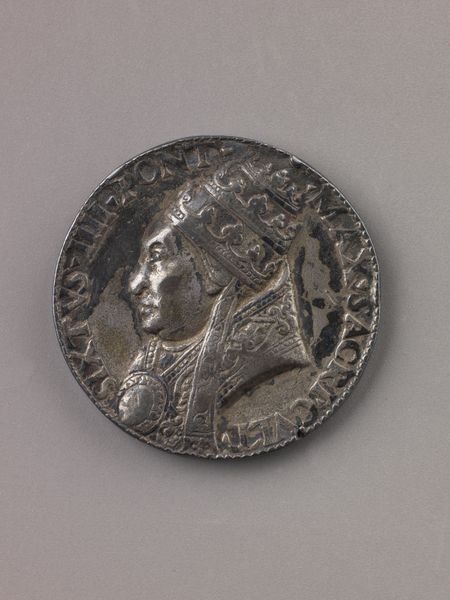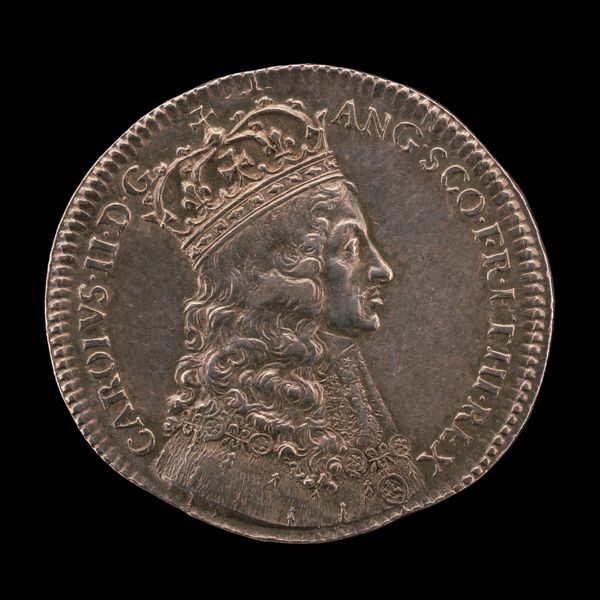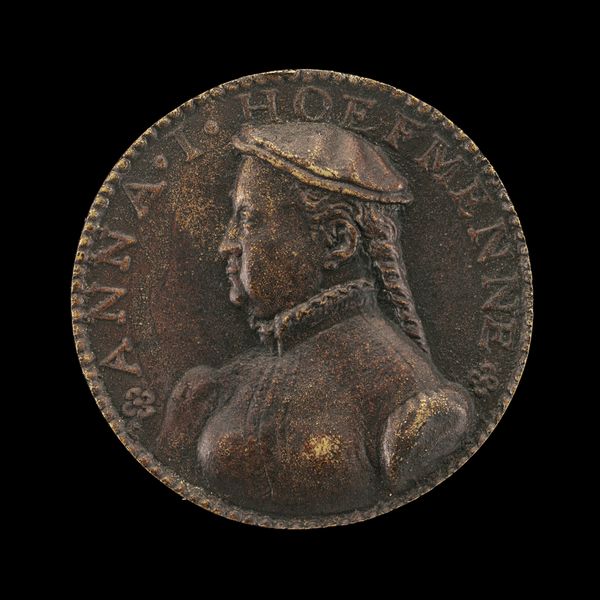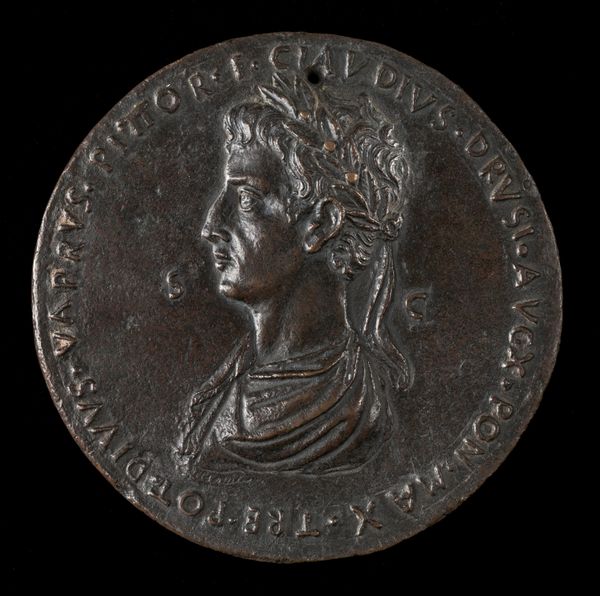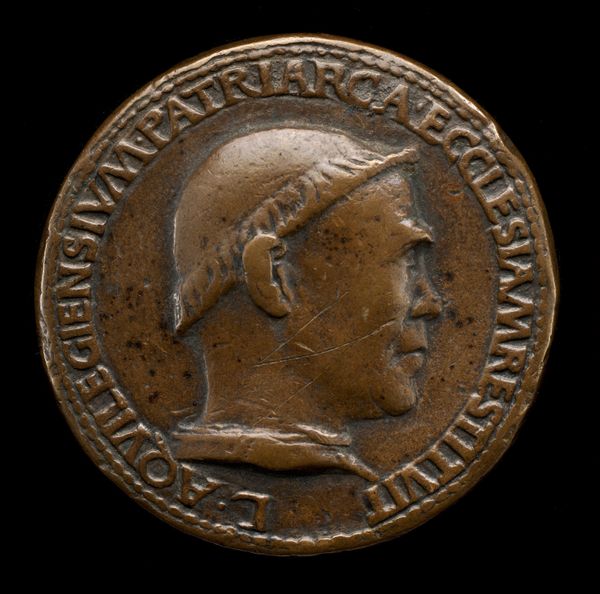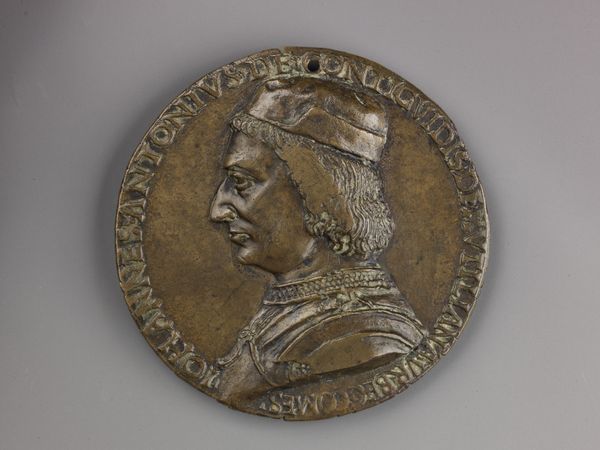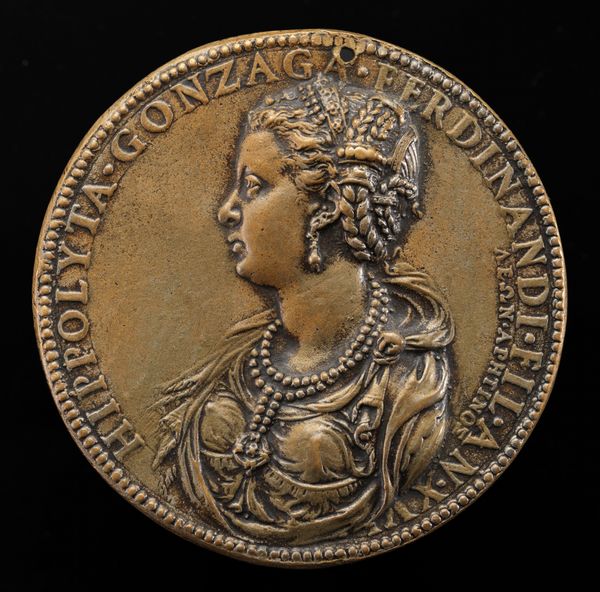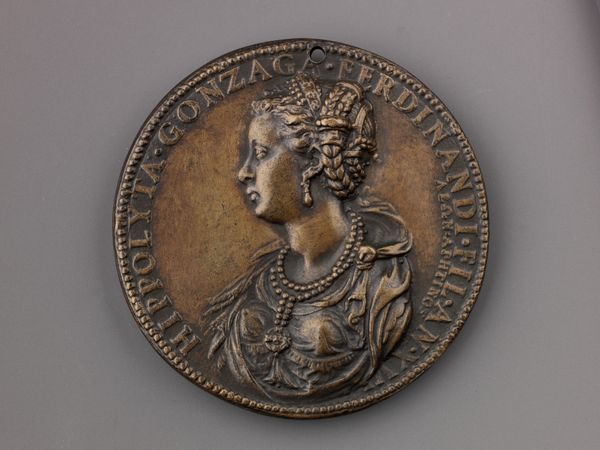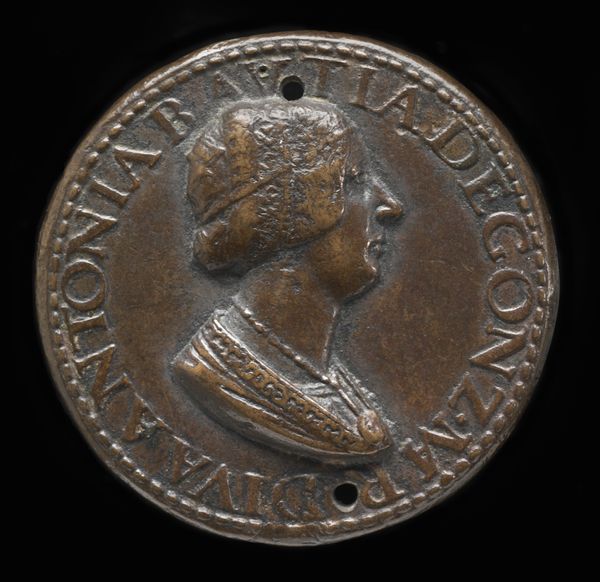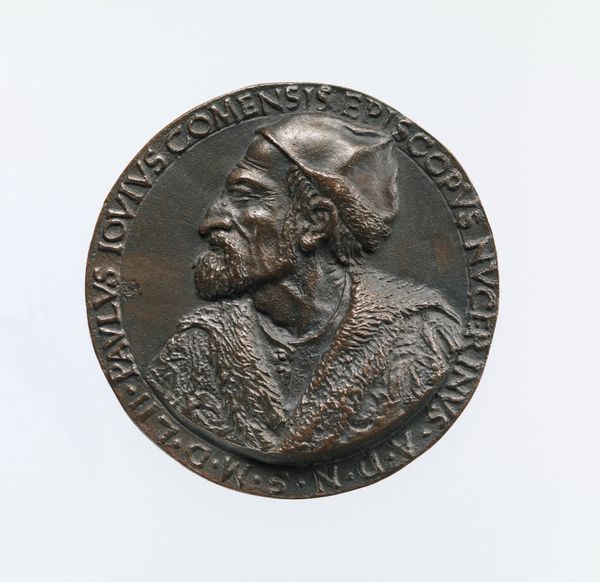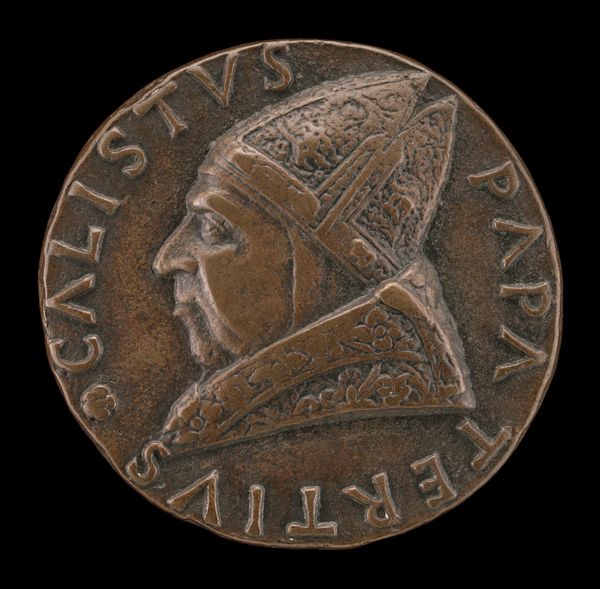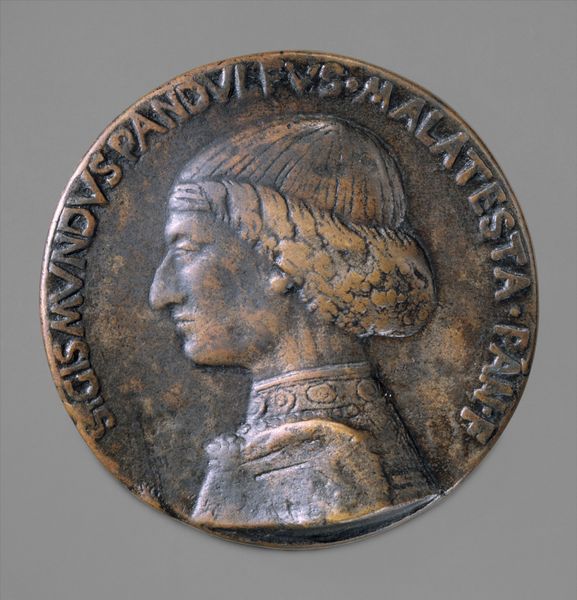
bronze, sculpture
#
portrait
#
medal
#
high-renaissance
#
sculpture
#
bronze
#
sculpture
#
history-painting
#
italian-renaissance
Dimensions: Diam. 4.1 cm, wt. 36.38 g
Copyright: Public Domain
Curator: Look closely at this exquisite bronze medal created around 1471 by Lysippus the Younger. It’s currently held in the collection of the Metropolitan Museum of Art. What’s your immediate reaction to it? Editor: Austere, undeniably… official. But also, it feels almost intimate somehow, despite being clearly designed to project authority. Curator: It's intriguing how such a small object could convey such monumental power, isn't it? Forged in bronze, it immortalizes Pope Sixtus IV, head of the Catholic Church during a rather turbulent period. What interests you particularly about the process or the materials? Editor: Bronze speaks volumes. Casting allowed for reproducibility, disseminating the image and thus the authority of Sixtus far and wide. Mass production, essentially, for political gain. It begs the question: who exactly was meant to receive and consume these objects, and what impact did this production method have on art in general? Curator: Exactly. These medals would have circulated among the elite, like diplomatic gifts, ways to flaunt power or establish a patron’s image. But beyond the strategic implications, the piece has an emotive dimension too, at least for me. There's a profound psychological weight evident in his gaze. Do you sense that, too? Editor: Oh, I can agree with that sentimentality. I focus more on what bronze communicates within that structure: not just that it represents power, but on labor as part of consumption, how materiality is distributed in an artistic format. Curator: It makes one ponder the paradox inherent in art: its capacity to both document and invent history. The high-renaissance aesthetic lends a timeless air, a romanticized version of power. Editor: Definitely true. Looking at the piece itself again makes me feel a greater sense of the scale of Renaissance labor, consumption, and cultural dissemination, rather than being caught up in ideas of emotion or historicity. Curator: Thinking about it, it brings a focus to how artistic consumption truly shifts power and perception. It’s interesting how one small token is truly multi-layered when thinking of materials as power. Editor: And just considering these nuances has made my view much more complex, too.
Comments
No comments
Be the first to comment and join the conversation on the ultimate creative platform.
